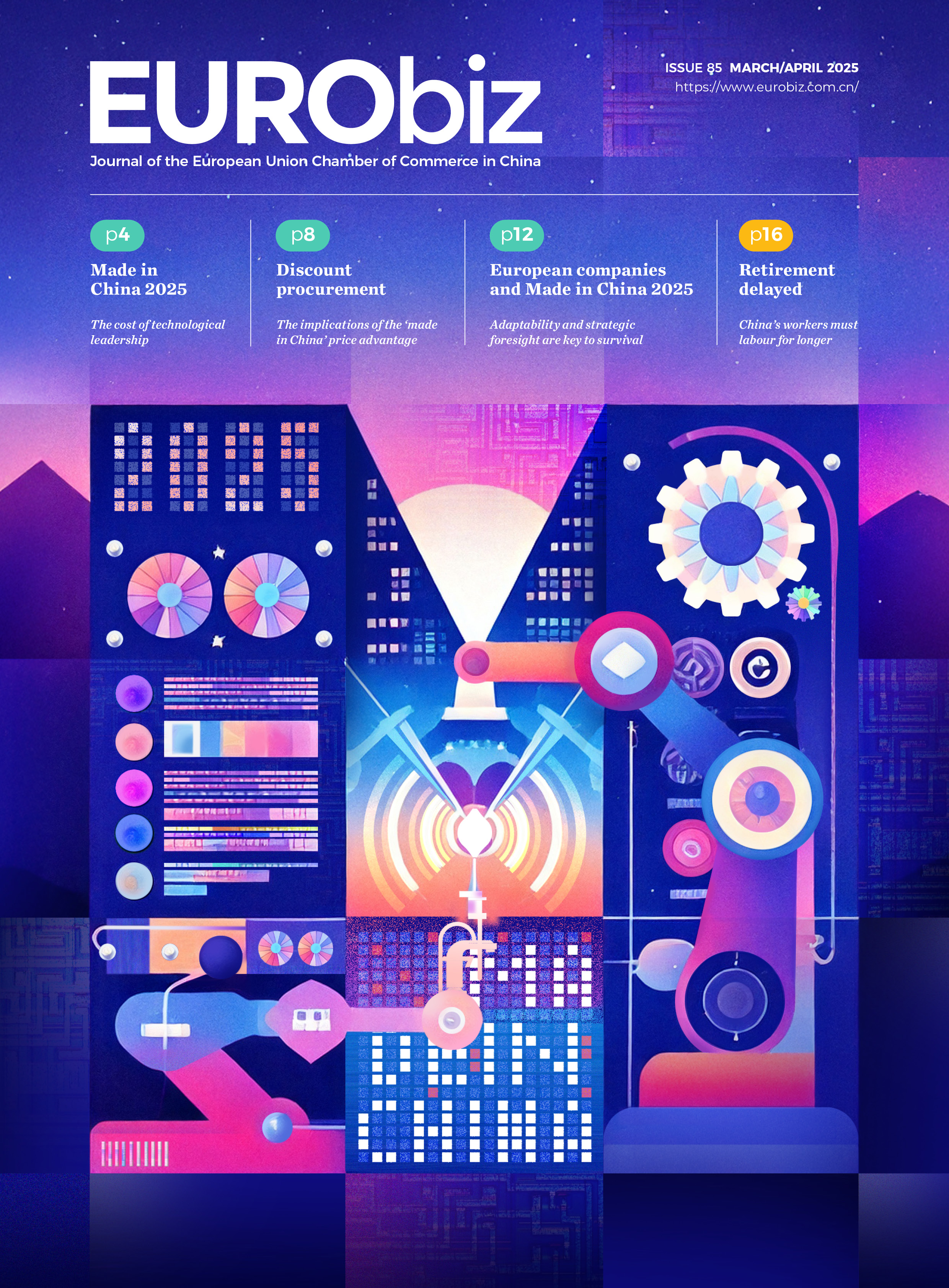 In China, most multinational companies (MNCs) in the pharmaceutical industry have established compliance departments, with dedicated full-time compliance professionals. Many of the top ten MNCs have even designated their compliance heads vice presidents, giving them equal status with many business unit heads. Clarissa Shen of Sanofi provides further details of how far pharmaceutical companies in China are going to ensure compliance throughout their entire business.
In China, most multinational companies (MNCs) in the pharmaceutical industry have established compliance departments, with dedicated full-time compliance professionals. Many of the top ten MNCs have even designated their compliance heads vice presidents, giving them equal status with many business unit heads. Clarissa Shen of Sanofi provides further details of how far pharmaceutical companies in China are going to ensure compliance throughout their entire business.
Implementing written policies and procedures
Compliance policies may evolve depending on industry expectations and prevailing practices. Take China’s cultural gift policy as an example: prior to 2015, many member companies of the Research and Development Based Pharmaceutical Association Committee (RDPAC) allowed cultural gifts to be given during traditional Chinese holidays – the RDPAC 2012 Code allowed cultural gifts with a monetary value of no more than CNY 200 (approximately EUR 25) to show respect and appreciation from the company. Only one or two member companies set a higher standard, and did not allow others to be given to healthcare professionals (HCPs). The code was subsequently amended in 2015, prohibiting the provision of such gifts.
Conducting effective training and education
Given the sheer size of sales forces in the China market and its average turnover rate of around 20 per cent per year,[1] it is very important that every sales professional, prior to his/her starting, has obtained adequate compliance training. This can protect both the company and individual from non-compliant behaviour including, but not limited to, off-label promotion.
Conducting internal monitoring and auditing
A combination of desk monitoring and onsite live monitoring is deemed the most effective monitoring method. Since the summer of 2013, many MNCs began engaging either additional internal resources or external accounting firms to perform a larger portion of invoice checking (some companies even check 100 per cent of business expenses) to prevent fake invoice/fapiao issues. Today, more than half of the top 10 pharma companies are known to perform onsite live monitoring as well to sample-check that meeting activities are always adhered to from every compliance aspect.
Enforcing standards through well publicised disciplinary guidelines
According to local labour law, companies have the right to discipline employees on the condition that the disciplinary matrix of the company has been well publicised across the organisation through a certain process. Embedded in their employee handbooks, companies normally publicise the disciplinary guidelines and require the employee’s signature as acknowledgement and commitment. Despite this, it is highly recommendable that the disciplinary guidelines be part of employees’ training, in particular that line managers enforce standards as a deterrent effect.
Responding promptly to detected problems and undertaking corrective action
Upon closure of an investigation case where allegations are confirmed fully or partially, compliance officers, in collaboration with other leadership executives, may advise of any loophole and/or internal control weakness in the existing management process to ensure systematic approaches are being taken to avoid similar issues.
Online-to-offline is a business strategy that draws potential customers from online channels to physical stores. Online-to-offline commerce, or O2O, identifies customers in the online space, through emails and internet advertising, and then uses a variety of tools and approaches to entice the customer to leave the online space. This type of strategy incorporates techniques used in online marketing with those used in bricks-and-mortar marketing.[2] According to a research report, the O2O market size will expand to CNY 660 billion in 2016, a growth of 55 per cent compared to 2015.[3]
The O2O business has changed lots of industries in the last two to three years in China’s market, which also gives the opportunity to improve compliance management in many aspects:
It has been historically almost impossible to track and monitor medical reps’ hospitality expenses in a country that has many hundreds of thousands of restaurants. Fake invoices, fake POS slips, fake consumption breakdowns, accompanied by fake meals, represent the majority of the compliance issues in China.
With developments in O2O, it is now possible to work with O2O service providers in the restaurant industry to:
- Establish a qualified restaurant pool Not all the restaurants are venues qualified for conducting business meetings. With certain criteria, like eligibility for issuing invoices, allowing corporate payment and accepting spot-checks, we can establish and maintain a qualified restaurant pool close to the healthcare organisations to host any meetings.
- Transparency of hospitality costs Although most pharma MNCs in China have implemented a corporate credit card programme, if an individual intends to collude with a restaurant, the money may technically be transferred from the corporate credit card account to the restaurant account using a T+1 (one day following the transaction date) method, and afterwards find its way into an individual’s pocket with a certain discount using a T+2 method. With the advent of O2O platforms, business expenses can be paid to the platform first, with the transfer between the O2O platform and the restaurant then being blocked for 7–15 days for further validation. This provides more transparency when checking hospitality costs.
- Visibility of onsite spot-checks Also, with the O2O platform, we can easily filter out last-minute reservations, or reservations at a venue that do not appear to be rational, e.g. a venue place far from the healthcare organisation, to allow onsite spot-checks to validate the authenticity of a business meeting.
Engaging a travel agency to provide package services for quotations for air tickets, conference rooms and accommodation, is a common practice for the industry when organising events. More and more pharma MNCs have now begun to split the package and centralise the procurement of each component. Today, we are able to differentiate O2O with packaged offline logistics services:
- Transparency of bidding and quotations In China’s O2O event logistics business, we see an emerging capacity of some of the largest platforms that can offer more than 600 conference venues in one bid, with predefined criteria like location and number of participants. Such O2O platforms can easily filter out the most cost-effective selections and at the same time provide companies with a transparent quotation.
- Payment centralisation Centralised management of event logistics is what companies have been endeavouring to do to control operational risks. As far as hotel management is concerned, it is too challenging for an affiliate to manage several hundred hotels. The benefit of an O2O platform is that it can serve as a bridge between the corporation and the hotels yet retain the transparency of downstream suppliers’ (e.g. hotels) prices.
c) Local transportation services
Similar to UBER in Western countries, online taxi services are now becoming popular in China. According to the consulting firm Roland Berger, these services reached a market size of CNY 7.7 billion in 2015, and are expected to grow to CNY 500 billion in 2020.[4]
Up until now, fake taxi invoices have been a problem in third- and fourth-tier cities in China. With the development of O2O alongside the accessibility of online taxi services, regardless of the location where companies engage local transportation services, fake invoices are becoming a thing of the past.
One lump-sum invoice with as many service breakdowns as a company wishes can prevent fake invoice risks in a corporation’s booking and accounting system. Journey routes and duration can even be tracked in real time.
Big data has the potential to allow pharmaceutical companies to assemble much more compliance-related information from a wide variety of sources, and to extract actionable insights from it. Putting together relevant historical big data into an automatically designed analytical tool to allocate data abnormalities can also help to identify compliance risks.
E&Y’s Asia-Pacific Fraud Survey 2015 reveals: “Life sciences employees say they will leave or refuse to join companies involved in bribery and corruption. This adds a new dimension to compliance. Not getting it right will put retention and recruitment of top talent and growth strategies at risk.” This underlines the additional incentive that companies and executives have to operate their business in an ethical manner. A culture based around ethics and business integrity protects a company’s reputation, attracts and retains talent, and ensures sustainable business growth. Leadership teams and business managers, therefore, must set an example of ethical behaviour, walk the talk, communicate and proactively foster a compliance culture.
Sanofi, a global healthcare leader, discovers, develops and distributes therapeutic solutions focused on patients’ needs. Sanofi is organized into five global business units: Diabetes and Cardiovascular, General Medicines and Emerging Markets, Sanofi Genzyme, Sanofi Pasteur and Consumer Healthcare. Sanofi has a strong commitment to China. In 1982, Sanofi became one of the first foreign pharmaceutical companies to open offices in China. Today, Sanofi has around 9,000 employees in China and is one of the fastest-growing healthcare companies in the country.
The views expressed in this article are personal opinions of Clarissa Shen Yanrong, and do not necessarily represent those of her employer.
[1] How to Improve Employee Engagement, Aon Hewitt, http://www.aon.com/thought-leadership/china-connect/april-2011/engagement_in_pharmaceutical_industry.jsp
[2] What is ‘Online-To-Offline Commerce’, http://www.investopedia.com/terms/o/onlinetooffline-commerce.asp
[3] 2016 O2O market in China will be expanded rapidly to RMB66bn http://www.fjess.gov.cn/dzswhy/20494.jhtml
[4] http://mt.sohu.com/20160322/n441511292.shtml


Recent Comments